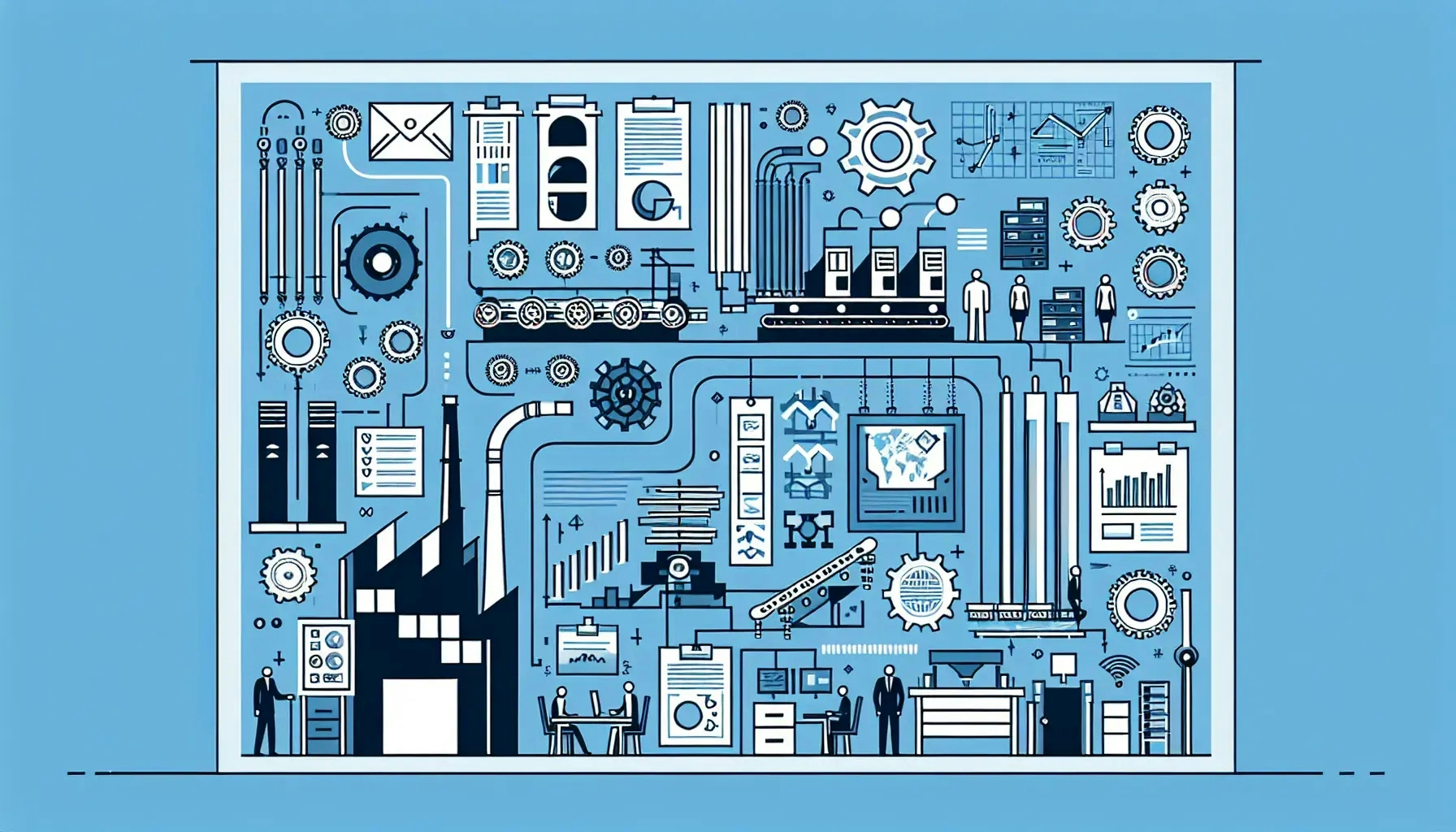Welcome to a comprehensive exploration of lean manufacturing principles. This blog post aims to shed light on the core tenets of lean manufacturing, a philosophy that has revolutionized the production industry. We'll delve into its origins, its key principles, and how it can be effectively implemented to maximize productivity and minimize waste.
The Genesis of Lean Manufacturing
Lean manufacturing, also known as lean production, originated from the Toyota Production System in Japan. The system was designed to eliminate waste and improve overall efficiency. It was a radical departure from traditional manufacturing methods, focusing on continuous improvement and respect for people.
The Toyota Production System identified seven types of waste: overproduction, waiting, transport, over-processing, inventory, motion, and defects. By eliminating these wastes, the system aimed to create more value with less work. This philosophy has since been adopted by manufacturers worldwide, leading to the development of lean manufacturing.
Lean manufacturing is not just a set of tools or techniques. It's a philosophy that requires a change in mindset and culture. It's about creating a system where everyone, from the shop floor worker to the CEO, is involved in continuous improvement. It's about creating a culture of respect, where everyone's ideas are valued and everyone is working towards a common goal.
The Five Principles of Lean Manufacturing
Lean manufacturing is based on five key principles: value, value stream, flow, pull, and perfection.
Value is defined from the customer's perspective. It's what the customer is willing to pay for. In lean manufacturing, the goal is to maximize the value provided to the customer while minimizing waste.
The value stream is the set of all actions, both value-adding and non-value-adding, required to bring a product from concept to customer. The goal is to identify and eliminate non-value-adding activities, also known as waste.
Flow refers to the smooth, uninterrupted movement of products through the value stream. The goal is to create a system where products flow seamlessly from one process to the next, without delays or bottlenecks.
Pull means that products are only produced when there is a demand for them. This is in contrast to traditional manufacturing, where products are produced in anticipation of demand. The goal is to reduce overproduction, which is considered the most serious form of waste.
Perfection is the ultimate goal of lean manufacturing. It's about continuously improving processes, eliminating waste, and striving for perfection. It's a journey, not a destination.
Implementing Lean Manufacturing
Implementing lean manufacturing is not a one-time event. It's a journey that requires commitment, patience, and persistence. It's about changing the culture of an organization, which is no small task.
The first step is to understand the current state of the organization. This involves mapping the value stream, identifying waste, and understanding the flow of products. This provides a baseline from which improvements can be made.
The next step is to develop a future state map, which is a vision of how the organization should operate. This involves designing a system that maximizes value and minimizes waste. It's about creating a system where products flow smoothly from one process to the next, without delays or bottlenecks.
The final step is to implement the changes, monitor the results, and make adjustments as necessary. This is where the principle of continuous improvement comes into play. It's about constantly looking for ways to improve processes, eliminate waste, and strive for perfection.
The Role of Leadership in Lean Manufacturing
Leadership plays a crucial role in the successful implementation of lean manufacturing. Leaders are responsible for creating a culture of continuous improvement, where everyone is involved in improving processes and eliminating waste.
Leaders must also show respect for people, which is a fundamental principle of lean manufacturing. This involves listening to their ideas, involving them in decision-making, and recognizing their contributions. It's about creating a culture where everyone feels valued and everyone is working towards a common goal.
Leaders must also lead by example. They must demonstrate a commitment to continuous improvement and respect for people. They must be willing to change their own behaviors and attitudes, and they must be willing to challenge the status quo.
The Benefits of Lean Manufacturing
Lean manufacturing offers numerous benefits. It can lead to significant cost savings by reducing waste and improving efficiency. It can also lead to improved product quality, as defects are identified and eliminated earlier in the process.
Lean manufacturing can also lead to improved customer satisfaction. By focusing on value from the customer's perspective, companies can better meet their customers' needs and expectations. This can lead to increased customer loyalty and repeat business.
Lean manufacturing can also lead to improved employee morale. By involving everyone in continuous improvement and showing respect for people, companies can create a more positive and engaging work environment. This can lead to increased employee satisfaction and retention.
The Challenges of Lean Manufacturing
While lean manufacturing offers numerous benefits, it's not without its challenges. One of the biggest challenges is changing the culture of an organization. This requires a change in mindset and behaviors, which is not easy to achieve.
Another challenge is sustaining the improvements. It's not enough to make changes; these changes must be sustained over time. This requires ongoing commitment and effort, and it requires a system for monitoring and adjusting processes.
A third challenge is dealing with resistance to change. Not everyone will be on board with the changes, and some may actively resist them. This requires strong leadership and effective communication to overcome.
Wrapping Up the Lean Manufacturing Journey
Lean manufacturing is a powerful philosophy that can transform the way organizations operate. It's about maximizing value and minimizing waste. It's about continuous improvement and respect for people. While it's not without its challenges, the benefits can be significant. Whether you're a small business owner or a leader in a large corporation, understanding and implementing the principles of lean manufacturing can lead to significant improvements in efficiency, quality, and customer satisfaction.

